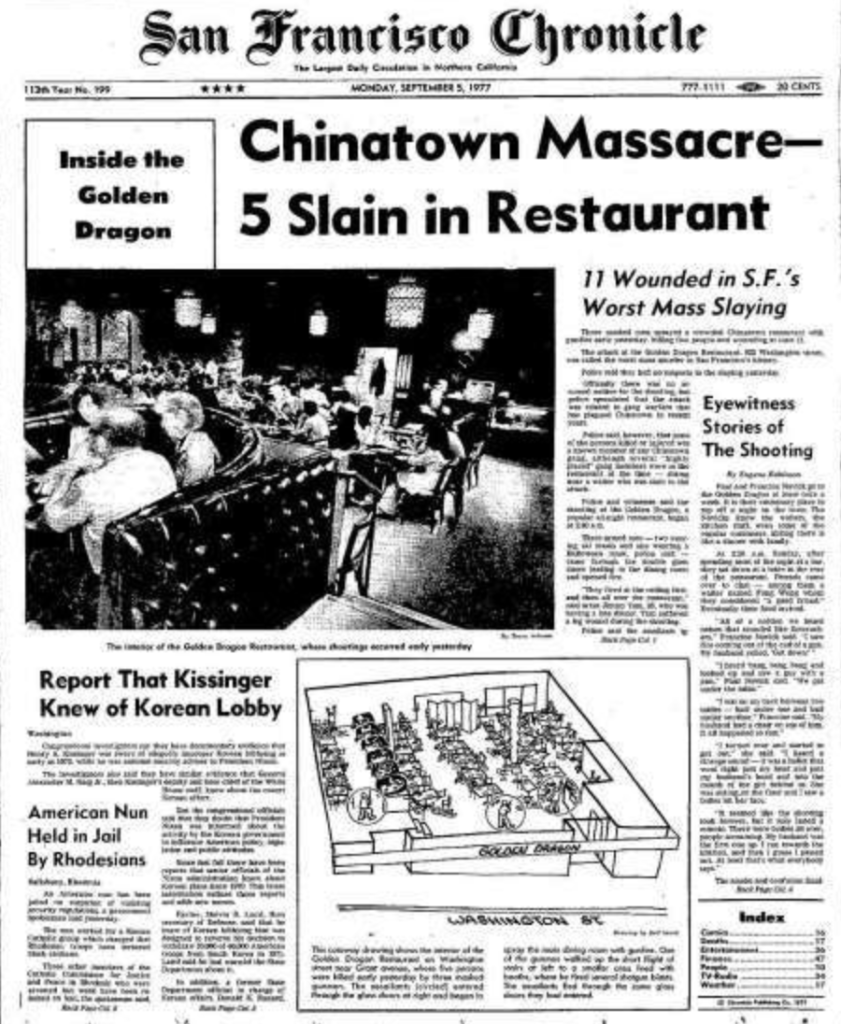On September 4, 1977, members of a Chinese youth gang, attempting to kill leaders of a rival gang, shot up the Golden Dragon Restaurant at 822 Washington Street in San Francisco. Sometime before the Golden Dragon was established, a restaurant at the address was named Tao Lee Yon. It was a teacup on eBay that connected me to these places and events.
One of the fascinations of collecting is being able to tie objects to people, places and events. If you’re a collector or “antiquarian,” you know that’s often difficult. Starting with the place you purchased or found a given object, the next step is to attempt to figure out where it was made or manufactured, and make a general assessment of the time period. It’s less often we can connect things to specific people or places. The nice thing about teacups from American Chinese restaurants is they have an address printed on them and in many cases, all it takes is an internet search to uncover places and events like the horrific murders in San Francisco.

September 5, 1977 headline.
I’m not sure why they have an address on them. The person drinking tea from the cup has already found the restaurant. Perhaps it was just pride or meant to prevent theft, but whatever the reason, today it makes collecting these cups fun – as far as reading about gruesome historical events can be fun.
Chinese restaurants in the United States date to about 1850. While those in San Francisco catered to Chinese diners, restaurants in smaller towns catered to a broader taste and are credited with developing what’s today known as American Chinese Food. As I once heard it explained, the early immigrants cooked the way they knew how with what was available. Eventually, restaurants emerged.
A restaurant in Seattle’s Chinatown.

Prior to the 1950s, non-distinguished dinnerware for restaurants was provided by American manufacturers like Shenango. Later, recognizing the market, American companies began to market designs aimed at the growing number of American Chinese restaurants. It’s a market F. S. Louie and the Ying Co. began to cater to.
You can read more about the history of F.S. Louie here. They made wares for entrepreneur families in a variety of cities and in addition to telling the story of buildings and neighborhoods in urban areas, these pieces can help lead us to stories about successful immigrant families. One of those is the Loo family who ran a number of restaurants in Arizona.

A postcard from a restaurant in Chicago.
People who collect antiques or ceramics originating from China aren’t generally interested in these. The craftsmanship is poor, the printing quality is usually substandard, and, rather than being fine dinnerware, they are weighty – made to withstand day-to-day use in restaurants. They are also not technically antiques, many are less than 50 years old.
Collections can go beyond tea cups. These first came into my sphere when I spotted two plates at a small antique mall in Albuquerque, New Mexico. These had markings (you can see them in the first link), but no address or other indication of what restaurant they were used in. This is often the case as many were purchased without customized information. Searching for information on the plates, I moved on to tea cups, which are readily available for between $15 and $50 on eBay or Etsy, sometimes available in sets.


